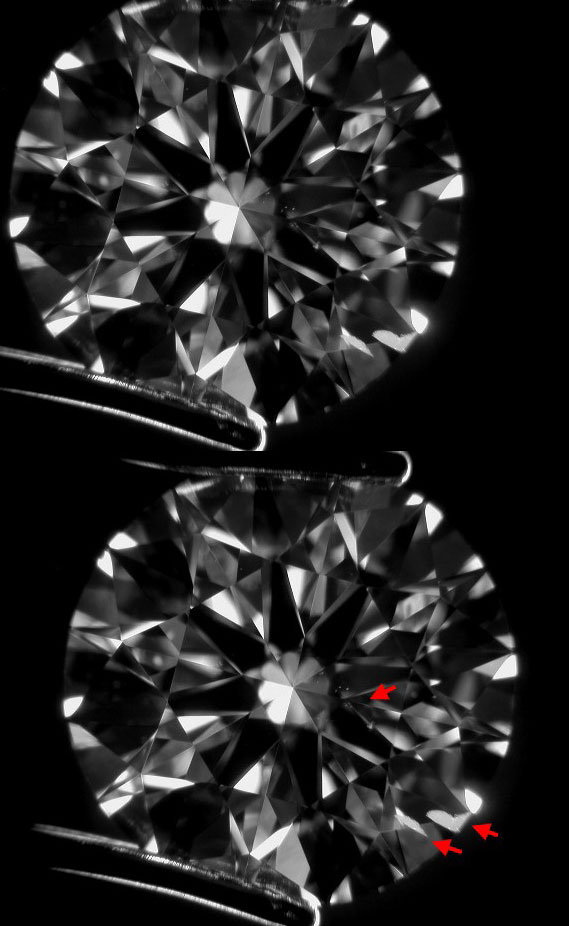jadeleaves
Brilliant_Rock
- Joined
- Apr 24, 2004
- Messages
- 1,464
Hello!
I would like some expert opinions on open feathers with regards to the clarity pic posted below. Jon told me that ''the feathers does reach the surface but looks to be healed''. He is seeking a second opinion on the feathers, but he''s gone on vacation and I want to make a decision on this soon in order not to keep the diamond out of circulation.
I have done some research, and the consensus seems to be to stay away from them, or to put it in a ''safe'' setting like a bezel. Bezel setting the stone is not an option for me.
Stones in this size has been hard to come by in the specs I wanted, but I have high hopes that this will be IT for my RB upgrades, so I want something I will be happy with, and not have to worry about the stone breaking.
I love everything else about this rock, but will appreciate thoughts on the feather issues! Thanks in advance!

I would like some expert opinions on open feathers with regards to the clarity pic posted below. Jon told me that ''the feathers does reach the surface but looks to be healed''. He is seeking a second opinion on the feathers, but he''s gone on vacation and I want to make a decision on this soon in order not to keep the diamond out of circulation.
I have done some research, and the consensus seems to be to stay away from them, or to put it in a ''safe'' setting like a bezel. Bezel setting the stone is not an option for me.
Stones in this size has been hard to come by in the specs I wanted, but I have high hopes that this will be IT for my RB upgrades, so I want something I will be happy with, and not have to worry about the stone breaking.
I love everything else about this rock, but will appreciate thoughts on the feather issues! Thanks in advance!








300x240.png)